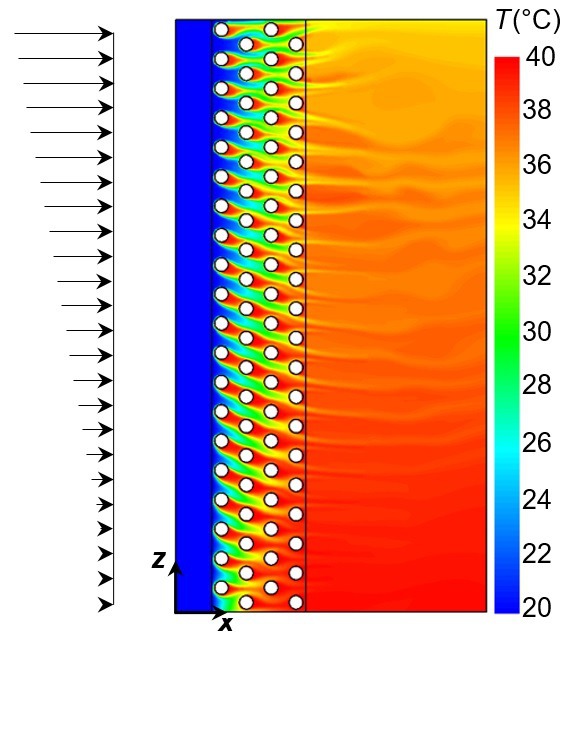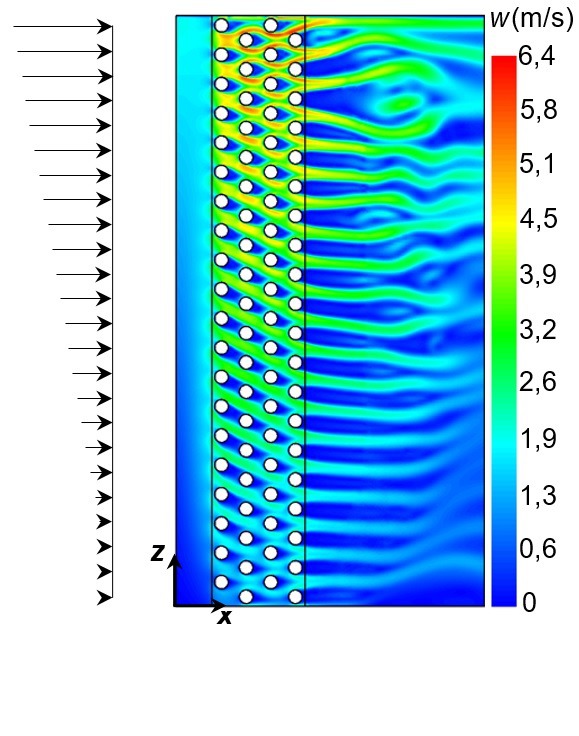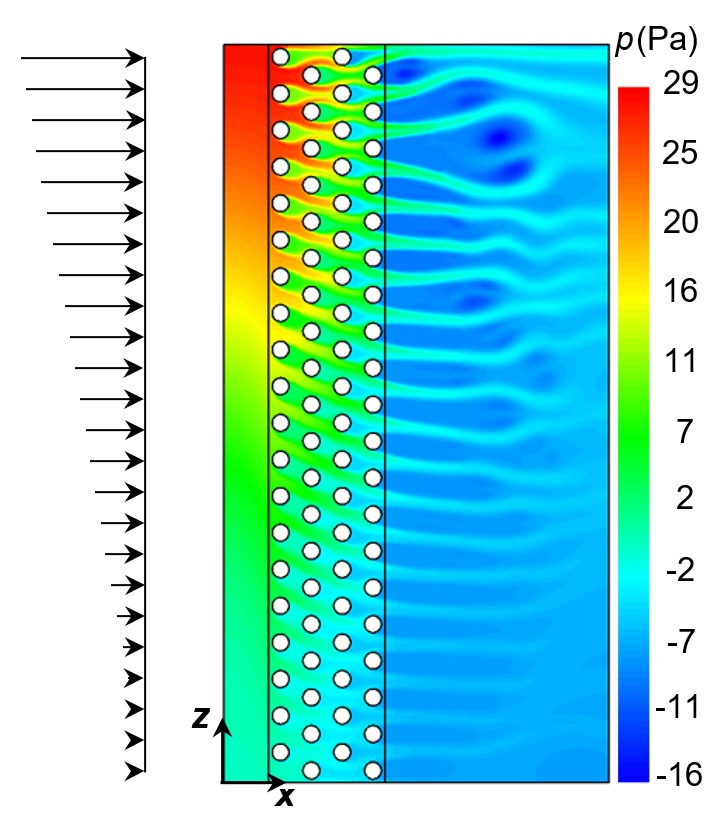PROJECT OBJECTIVES AND RESEARCH
1. Enhancement of the heat exchanger efficiency by studying the
optimal geometry characteristics
Within this objective relevant scientific literature will be studied and current scientific knowledge in the field of determining optimal geometry characteristics of fin and tube heat exchangers will be classified. The appropriate mathematical model will be defined, the numerical procedure will be selected and the numerical calculation will be performed. In order to validate the numerical procedure, experimental research on a test heat exchanger will be performed. For that purpose, test system will be designed and set up. It will be equiped with measuring equipment for temperature and flow measuring, as well as data acquisition and processing system. For data acquisition, custom application within a data acquisition and processing software (LabView) will be developed. Results of the numerical simulation of the test heat exchanger will be compared with the results of performed experimental research, so that the numerical procedure could be modified and improved, if necessary, until satisfactory data agreement will be achieved. After validation of the numerical model, a series of numerical simulations will be performed in order to investigate the influence of different geometry characteristics of fin and tube heat exchangers on the physical process of heat transfer and efficiency.
Expected results are related to increasing of existing scientific knowledge in the field of energy efficiency enhancement by selecting the appropriate heat exchanger geometry and by suggesting measures for their improvement in order to enhance the heat exchanger energy efficiency.
2. Enhancement of the heat exchanger efficiency by studying the
optimal operating conditions
Within this objective relevant scientific literature will be studied and current scientific knowledge in the field of determining optimal operating conditions of fin and tube heat exchangers will be classified. As part of this research, appropriate calculation method will be defined and numerical calculation will be performed. Existing test system will be modified to enable experimental investigation of the influence of different operating conditions. For data acquisition, custom application within a data acquisition and processing software (LabView) will be developed. Performed experimental research will serve to validate the calculation method. Results of the numerical simulation of the test heat exchanger will be compared with the results of performed experimental research, so that the numerical procedure could be modified and improved, if necessary, until satisfactory data agreement will be achieved. As part of the numerical investigation, a series of computational simulations will be performed in order to investigate the influence of different operating conditions of fin and tube heat exchangers on the physical process of heat transfer and efficiency.
Expected results are related to increasing of existing scientific knowledge in the field of energy efficiency enhancement by selecting the appropriate operating conditions and by suggesting measures for their improvement in order to enhance the heat exchanger energy efficiency.
3. Enhancement of efficiencies of latent heat storage unit and
renewable energy system with latent heat storage
After studying of relevant scientific literature, a classification of current scientific knowledge in the field of latent thermal energy storage will be performed. Within this objective, numerical and experimental research of heat transfer process during phase change and forced convection between the wall and working fluid will be carried out. For experimental investigation, a test system will be designed and set up. Test system will be equipped with appropriate measuring equipment, as well as with data acquisition and processing system, within which custom application for data acquisition will be designed. After defining the mathematical model and experimentally validating the numerical procedure, a numerical analysis of the influence of the latent heat storage operating conditions, geometry and phase change material characteristics on heat transfer and efficiency will be performed. As a part of this objective, experimental and numerical investigations on energy storing in the renewable energy system with latent heat storage will be performed. For experimental research, an existing renewable energy system, installed in the laboratory at Faculty of Engineering, will be used. This system will be upgraded with the latent heat storage unit and the appropriate measuring equipment. Experimental investigations will be performed for real operating conditions, and their results will be compared to the results obtained by system modelling in the Trnsys software. After the model validation, a computational analysis of renewable energy system with latent heat storage, for different operating conditions and system components dimensions, will be carried out.
Expected results are related to increasing of existing scientific knowledge in the field of energy efficiency enhancement by selecting the most suitable operating conditions, geometry, and phase change material characteristics, and by suggesting measures for their improvement. Expected results are also related to suggesting measures for efficiency increasing of the renewable energy system with latent heat storage.




